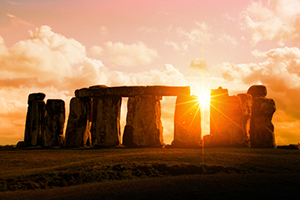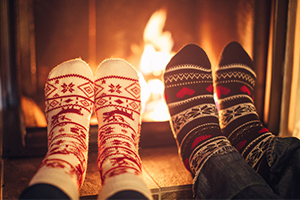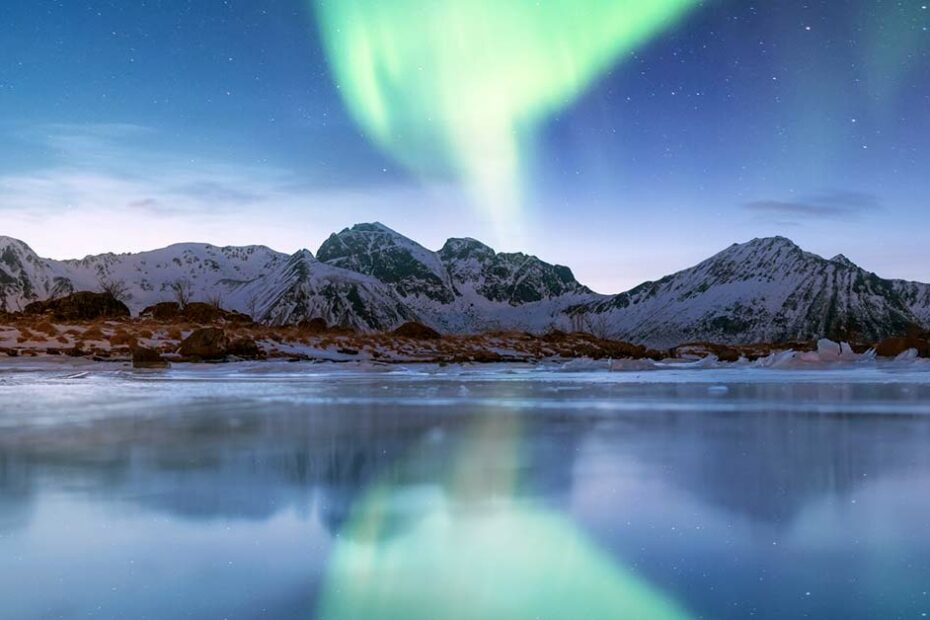For many cultures around the world, the winter solstice marks an important milestone. The winter solstice varies from year to year but usually takes place between December 20 and 23. It signifies the changing of the season. Take a look at how the solstice is celebrated globally and how you can prepare for longer nights and colder weather.
What Is a Solstice?
In the Northern Hemisphere, the December solstice is an astronomical phenomenon marking the shortest day and, therefore, the longest night of the year. The opposite is true if you live south of the equator, where it’s the longest day and shortest night of the year. No matter what part of the world you live in, this event occurs twice a year. At that moment, the Earth’s axis tilts its farthest away from the sun at 23-and-a-half degrees, offering all places north of the equator less than 12 hours of daylight. But don’t worry, this does not mean it is all doom and gloom. In fact, the day starts to become longer and nights shorter after the winter solstice.
Ancient Solstice Celebrations
The word solstice derives from the Latin words sol, meaning “sun,” and sistere, meaning “to stand still.” Throughout history, the December solstice has been a reason to celebrate the “turning of the sun.” It’s a promise that the season of dormant winter will indeed end and that the coming days will slowly lengthen themselves into summer.

The ancient Egyptians, Celts, and those who built the Stonehenge in England celebrated nature’s continuing cycle with midwinter feasts and festivals. The pagan holiday, Yule, named for the Norse word, “Jul,” translating to “wheel,” is one of eight solar holidays intended to spend time with friends and family, exchange gifts, and honor the sun’s rebirth. The Dongzhi, which translates to “the arrival of winter,” is a traditional Chinese festival dedicated to welcoming the solstice and its positive energy in the year to come. Want to learn more about ancient solstice celebrations? Head over here to find out.
Getting Ready For The Darkest Day of The Year
While there’s still light ahead of us, it’s a good idea to winter-proof your car before temperatures drop. If you need to drive in the dark, keep these safety tips in mind:

- Always use your headlights half an hour before sunset and after sunrise.
- Avoid driving in poor weather conditions.
- Keep your windshield and mirrors clean.
- Avoid two-lane highways due to glare.
- Combat fatigue and be aware of sleepy drivers.
Additionally, take the proper steps to winterize your home to keep warm and save your wallet from high electric bills. When it’s cold outside, take some of these precautions at home:

- Keep your walkways and driveways clear of snow and ice.
- Use caution with a fireplace, heaters, and candles.
- Close off rooms, windows, and vents you are not using.
- Dress warmly on cold days.
- Trim back or remove dead tree branches.
Preparing For Your Annual Insurance Review
Don’t wait until the new year to inspect your insurance policies. Now is probably the best time to make sure all your insurance policies are up to date. It’s worth noting that the cold and wet winter months approaching could mean dangerous weather such as snow, ice, winds, and heavy rain. Speak with an Insurance Specialist today by calling (855) 919-4247 to get a free quote and ensure you are adequately covered.
The information in this article is obtained from various sources and offered for educational purposes only. Furthermore, it should not replace the advice of a qualified professional. The definitions, terms, and coverage in a given policy may be different than those suggested here. No warranty or appropriateness for a specific purpose is expressed or implied.


